The AVID Hifi Reference Four is a £15 000, British designed and manufactured standmount that weighs in at an impressive 40 Kg including dedicated stand. Janine Elliot takes a listen to this innovative design.
 AVID Hifi is a company that doesn’t scrimp on metal or components to produce the very best in audio. Their turntables are heavy beasts and their amplifiers and speakers require significant muscle to move about the house.
AVID Hifi is a company that doesn’t scrimp on metal or components to produce the very best in audio. Their turntables are heavy beasts and their amplifiers and speakers require significant muscle to move about the house.
At £15000 their Reference Four might well be the baby of the family but this heavyweight is still 40kg including the stands (25Kg speaker plus 15Kg stand). It also includes much of the technical developments from its bigger siblings. Made from 10-20mm machine tooled aluminium (and 30-40mm on Ref 1 and 2!), this is not small in weight, nor is it in sound or technological prowess.
CEO, Conrad Mas will not be new to readers who have previously read my reviews on their turntables and phono-stages. At my visit to the company a year ago I was fortunate enough to listen to their Ref 4 before it hit the road, and said then that I wanted to review it. It was well worth the wait. AVID Hifi started its life back in 1995, and from turntable manufacturing the company it has over the years extended its expertise into phono stages, loudspeakers, preamps, power-amps, cables, alignment equipment, racks – the list just goes on – and very soon three tonearms and cartridges. The AVID HIfi banner also extends to the design and manufacture for other companies within the audio, automotive, medical and military industries. Their manufacturing base in Kimbolton, near Huntingdon, Cambridgeshire, is soon to extend to a second building for research and development, product training and of course that all-important listening. The site even had a coffee machine supplied with the building, which will be good news when I visit in the 2018! The facilities might be enlarging but the commitment to creating the best quality, whatever the cost, is something that sets them apart from many companies economising on design and technology just to make big profits.
Conrad Mas has had a life of working in engineering and hifi, with his interest in hifi going back to his purchase of a Connoisseur BD1 with its Acos Lustre arm at the age of 16 and spending hours trying to improve it. This led eventually to him creating his first Acutus turntable in 1995. His varied career has included insurance and glazing, Musical Fidelity, and sales at Harrow Audio and Acoustic Arts in Watford; the successor to the KJ LeisureCentre shop I spent many hours drooling over the hifi on my way to piano lessons, and which gave me the bug to collect and then review audio.
Einstein, Sinks and Damping
There are two kinds of energy of interest to an audio engineer; one is good and the other is an unwanted by-product of things such as resonances and distortions. In moving coil loudspeakers only 0.1% (one thousandth) of the acoustic energy makes itself into the music. 99.9% goes up in heat and other bi-products. In horn loudspeakers efficiency is still less than 2%. What links all AVID Hifi products is that famous conservation of energy law I grew up learning in science lessons at school, that ‘nothing can be created or destroyed only transferred or transformed’. Where I might turn my own spare energy into talking or making music, AVID Hifi turntables dissipate that unwanted energy away from the important playing area, and their loudspeakers similarly dissipate the energy created by all the vibrations, which would normally result in unwanted sound. Their Reference range of speakers “collect” all the unwanted vibrations and remove them before they have a chance to build up and affect the music. Historically the standard method of reducing the effect of unwanted resonances is by adding some form of mechanical damping – by choosing some kind of ‘lossy’ material or by adding mass with the intention of shifting the resonances outside of the audible frequency range. However the energy is still building up inside, and needs to be transferred into something that won’t affect the sound. Simply changing the resonant frequency of a device or adding damping doesn’t get rid of the energy, it will still be trapped in the device and when it does “escape” you’re going to hear it, albeit possibly now reduced in size.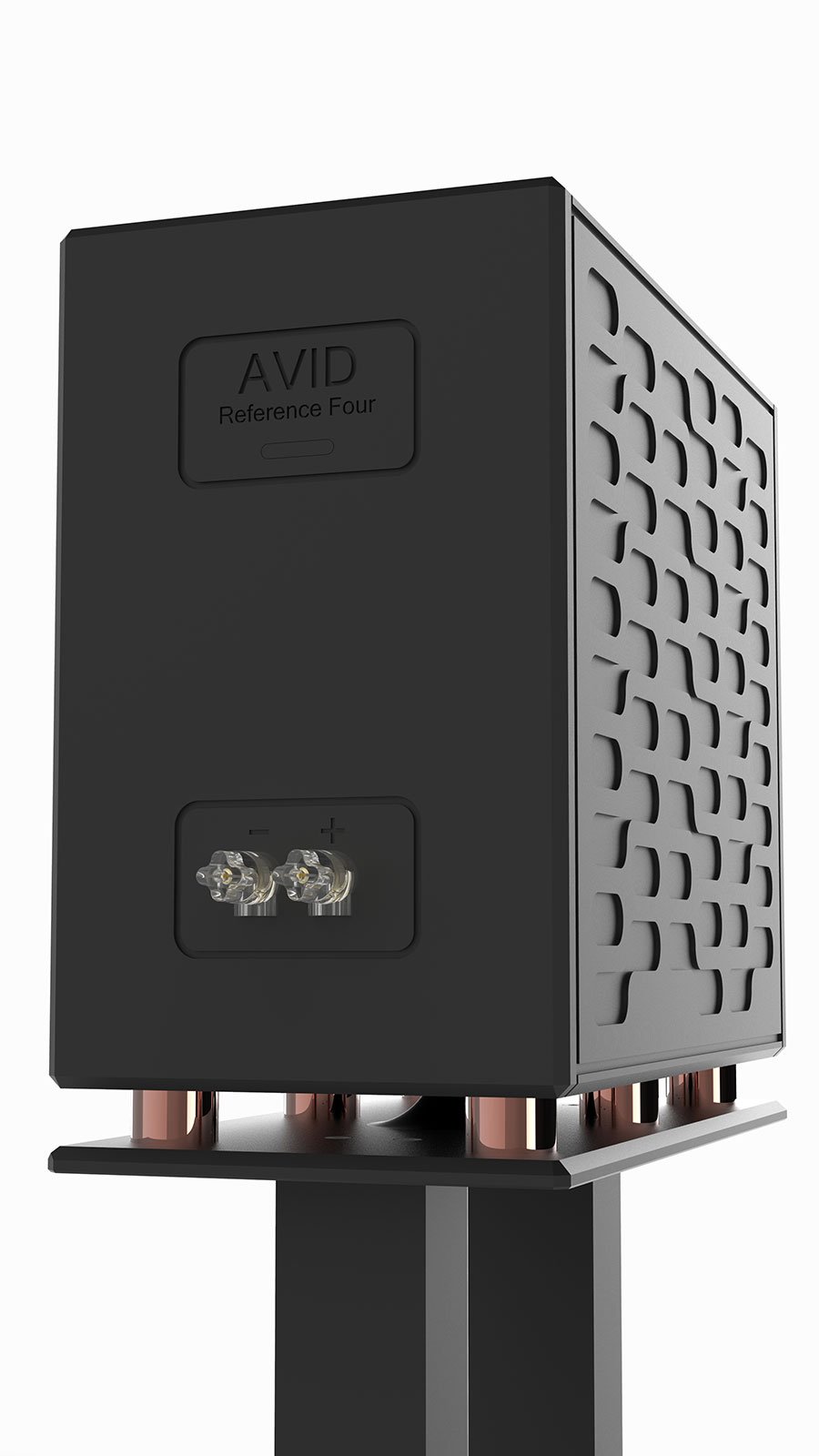
Conventional wooden cabinets vibrate, and no matter how well braced or glued will still leave some unwanted attributes. In the perfect world the only sound produced should be made directly by the movement of the cone, but in reality the same amount of energy into moving the cone will be put in to the chassis. In the case of a loudspeaker this means that the same amount of energy will be put in to the chassis and cabinet as into moving the cone itself. Many manufacturers use carbon fibre or metal to brace it all but that energy still needs to be released; often ending up back-firing into the drivers and colouring the sound if it can’t escape through heat or ports. The good thing is that energy will find its weakest point and escape through that point, and AVID has spent its years in the business looking at controlling that energy flow. What the company soon realised was that there are good and bad vibrations at source and that the bad energies should be given the path of least resistance to get to what it refers to as an “energy sink” from where it can quickly and harmlessly be converted to heat. In their turntables, AVID create a path of low resistance for the energy to travel from the record to the massive main chassis and away from the delicate record/cartridge interface, and in their speakers it is the ‘Tuned Mass Damping System’. What AVID want to do is get that energy and take it somewhere where it won’t affect the music, and they do that by adhering to yet another law of physics that states that everything will find its weakest link; if you create an easy path for that unwanted energy to exit then you will find it simpler to remove, a bit like a car having a crumple zone that takes all the energy on impact, whilst protecting the driver.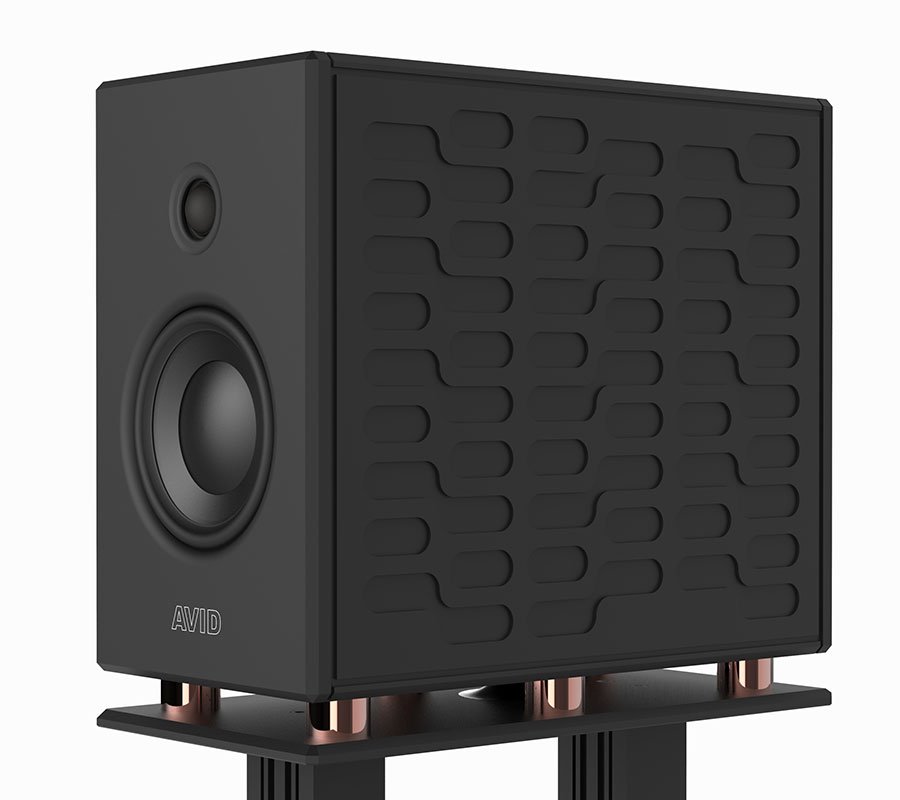
After much experimentation this took the form of a large mass added to the rear of each drive unit, the distinctive ‘Tuned Mass Damping System’. This metal damping plate is free to move (vibrate) inside the cabinet – energy, transferred to it via flexible couplings, including a pad between the driver and the plate and decoupling spacers between it and the front baffle. According to Conrad energy “Simply has no option other than to convert to heat within the cabinet”. As the damping system is decoupled from the driver, unwanted vibrations are allowed to dissipate and turn into heat freely without affecting the all-important audio chain.
The drivers themselves are sourced from Morel and consist of titanium 160mm woofer and 28mm tweeter. Instead of using the more conventional screws to hold the drive unit in place AVID Hifi use a clamping plate to compress and sandwich the driver all around its circumference to the front baffle. This with the more rigid than usual cabinet prevents the vibration from the driver entering the cabinet. It then passes back through the driver chassis and magnet into the Tuned Mass Damper, importantly keeping it away from the cone or cabinet. Each driver in the AVID design has the mass damper optimised to the specific driver – as is the damping material set between the driver and the damper. This ensures optimal performance throughout the full frequency range covered by the loudspeaker. The mass damper also incorporates a tapered internal port which allow ensures smooth, unrestricted airflow from the rear of the driver, enhancing linearity and dynamic performance.
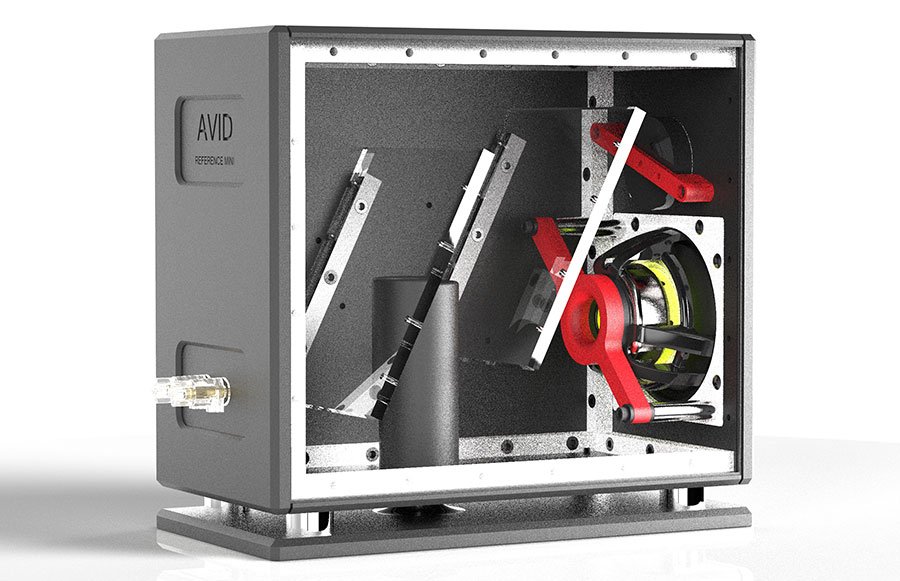
Of course, we can go further and discuss loss of energy and transmission of vibrations through floor or even from the floor up to the speaker – I regularly use a seismometer app on my phone to check that I am not influencing the sounds when I walk around or when the washing machine is busily spinning away! But, and this is a big but, the sound to your ears should be the defining reason for my liking or not a product, because sometimes we can get so carried away with technology, new ideas and specification that we don’t independently use our ears to decide if the product is actually good or bad. Luckily, I spent more time listening than reading and learning, and wasn’t disappointed by these loudspeakers.
The Morel drivers use very large diameter voice coils which surround the whole ring magnet assembly rather than just fitting inside the magnet’s inner circumference. This creates a larger surface area, and therefore the cooling area for the heat generated and also improves the ventilation, thereby reducing heat and air pressure. Less air pressure gives for more freedom of movement of the driver, creating more sound and less friction, and I noticed significant detail of sound including greater dynamics and no stress from whatever I played. I was lucky to use the very quick and accurate Music First Baby Reference passive preamplifier and their very new 100W mono-blocks, themselves designed specifically to allow a speedy and precise sound to match that of their preamplifier. My Krell KAV250a was used as alternative power for this review; that particular amplifier has a lot of grunt but not so tight a sound.
I was pleased to learn that the crossover was a relatively simple affair on these loudspeakers; a 2-way, 2nd Order design, largely because the two drivers work so well together. Having myself redesigned a few crossovers in the past, rather than using the complicated 3rd and 4th order OEM designs in some major bookshelf and floor-standers I have owned, I can vouch for simplicity where that is possible, and of course if it all works, a lot depending on accuracy and integration of the different drivers in the loudspeaker. Where complicated 18dB/24dB designs might give a very accurate frequency range for each driver, it invariably means less dynamics and speed; yet more wasted energy. The Tuned Mass Damper means that the drive units behave much more like their theoretical ideal, and this allows AVID Hifi to use a very simple (four high quality component) crossover design; two filters that blend the two drive units together in musical harmony. The result is an elegant crossover that has minimal impact on the audio signal.
The cabinet is equally well thought out being made from 10mm and 20mm aluminium throughout, with machined designs on the sides to match with those of the AVID Hifi amplifiers. Internally there are two baffles also acting as internal bracing and placed in such a way as to break up internal standing waves that a square box would create and so that they won’t head back to the driver and thus affecting the sound. The crossover is fitted to the rear of these two braces.
The Sound
First noted was the detail and speed of sound. This might be 15K for a relatively small box, but the sound (and weight) was by no means lightweight. Playing Pink Floyd “Astronomy Domine” provided a strong atmosphere of guitar, drums vocals and musique concrète that filled my personal ozone with detail, precision and power. The early 1967 recording on this 4-disc vinyl remastered Echoes compilation covered all frequencies with equal depth of detail and soundstage. The helicopter opening of “Another One Bites the Dust” was particularly realistic (especially at loud levels) even waking my usually unflappable cat, Toby, who had been sleeping on the ground to look up at the ceiling. If only I had a camera to hand.
Only when turning to one of my favourite discs, ‘Love Song’ from the Christian band of the same name did I feel the bass was slightly less than I expected; it wasn’t that anything was missing, just that the detail from the excellently mic’d drum kit seemed to transcend everything else being played, meaning bass guitar and piano lower notes were not as clear. Those cymbals are just so good, so fast and detailed. That said, the pulsating bassline in the first track of side four was faster than I had heard before. Just as the soundstage was notably vast front to back as well as side to side with Pink Floyd, here too in this live recording the vocalist could have been in the room, and each musician placed around and behind him.
Turning to Andre Previn, in Prokofiev’s excellent and lesser known ballet ‘Cinderella’ (EMI, London Symphony Orchestra) was a chance to put a whole orchestra in my living room. The orchestra and orchestration is vast and the instruments were placed magnificently across the soundstage, particularly the strings and horns to left and tubas and the rest of the brass section at the very back and right. Similarly the drums had their position set, and although the volume of sound wasn’t large, their positioning helped to give a detailed performance.
Whilst the Reference Four worked on all types of music I played, it was particularly large classical works that gave me the most enjoyment; that clarity, speed and ease of portrayal of the music was compelling, and it worked well at both low and high volume levels. Turning back to Pink Floyd “Echoes”, that percussion from Nick Mason might not be forceful – it is played with a great deal of compassion – but it was so clear and detailed that my attention was placed on this rather than the organ and guitar lines. Only in the later instrumental part of the track did that percussion take over and show me just how quick and good the bass is from this diminutive Morel driver.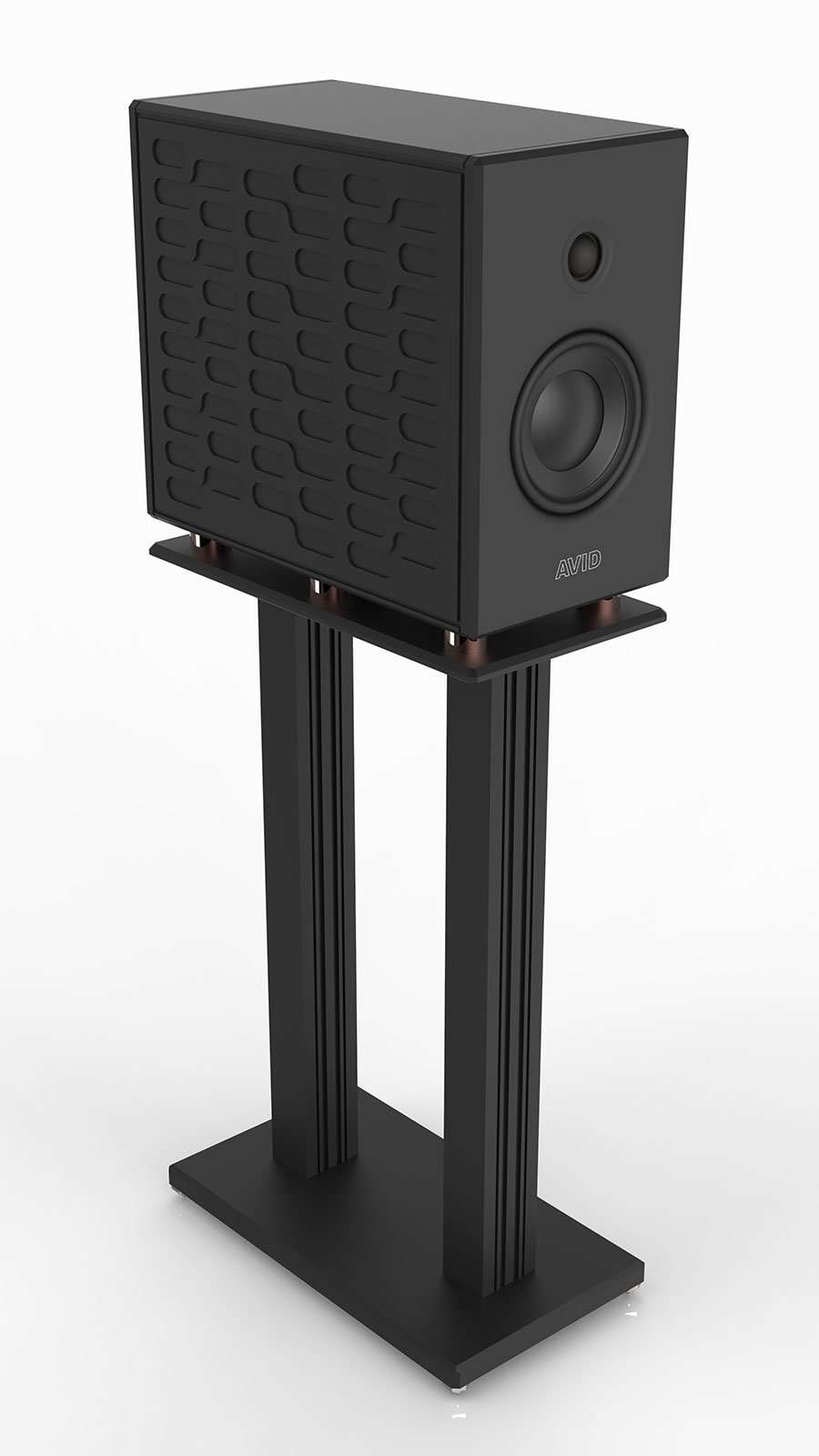
The Four has a downward firing reflex port with a 360 degree diffuser on the stand allowing bass to exit in all directions just several inches below the driver, itself creating a very focused sound from bass to highs, and those tight bass thuds from the kick drum were able to penetrate the room with aplomb. I have never liked rear facing ports as they restrict speaker positioning, and similarly front ports can be a pain. The AVID Hifi flared diffuser distributes the airflow, controlling maximum air velocity. This is achieved by spreading the moving air “over a wide area, with no constrictions”. This resulted in a very precise, undistorted and unrestricted bass-end, at whatever levels I played. The percussion in the Pink Floyd tracks didn’t get in the way nor sound muddy, resulting in much reduced noise normally caused by non-laminar airflow. Whilst the Reference Four is only available in black it does come in a choice of black, red or copper feet that sandwich it to the stand, leaving space for that bass port diffuser. Although I did find the best positioning of the speaker was 2 feet from a wall, this speaker was less critical than many I have had the (mis)fortune to have to place in my living room.
AT A GLANCE
Conclusion
I was very impressed with this loudspeaker. It might be a stand-mount but it had the frequency response and clarity that I normally hear in larger speakers.
The speed of delivery and accuracy of sound in all music, but particularly percussion and classical music, was very inspiring.
Sound was pure, and I guess that ‘Tuned Mass Damping System’ must be part of that. If you are serious about your music you should seriously consider the Reference Four.

Build Quality: Exceptionally good build quality and components.
Sound Quality: An exceptionally fast, detailed and honest portrayal of the music particularly lower bass and top end.
Value For Money: At £15,000 including VAT this is not a cheap unit but every penny is money well spent.
Pros: Fast and accurate portrayal of the music. Excellent at all frequencies; especially distortion free and quick at lower end, and detail at the top.
Cons: Colour options (any colour) come at a premium.
Janine Elliot
Specifications
|










































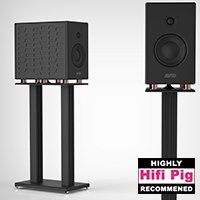







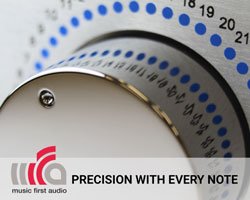















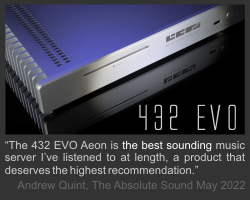




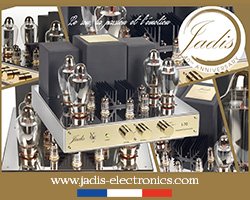



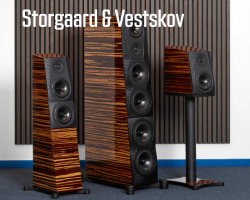




















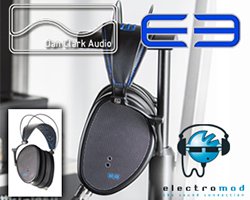



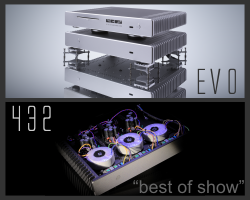










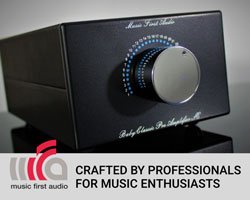
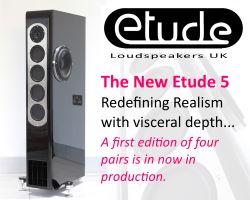



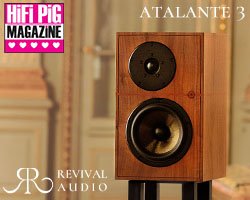
















































You must be logged in to leave a reply.